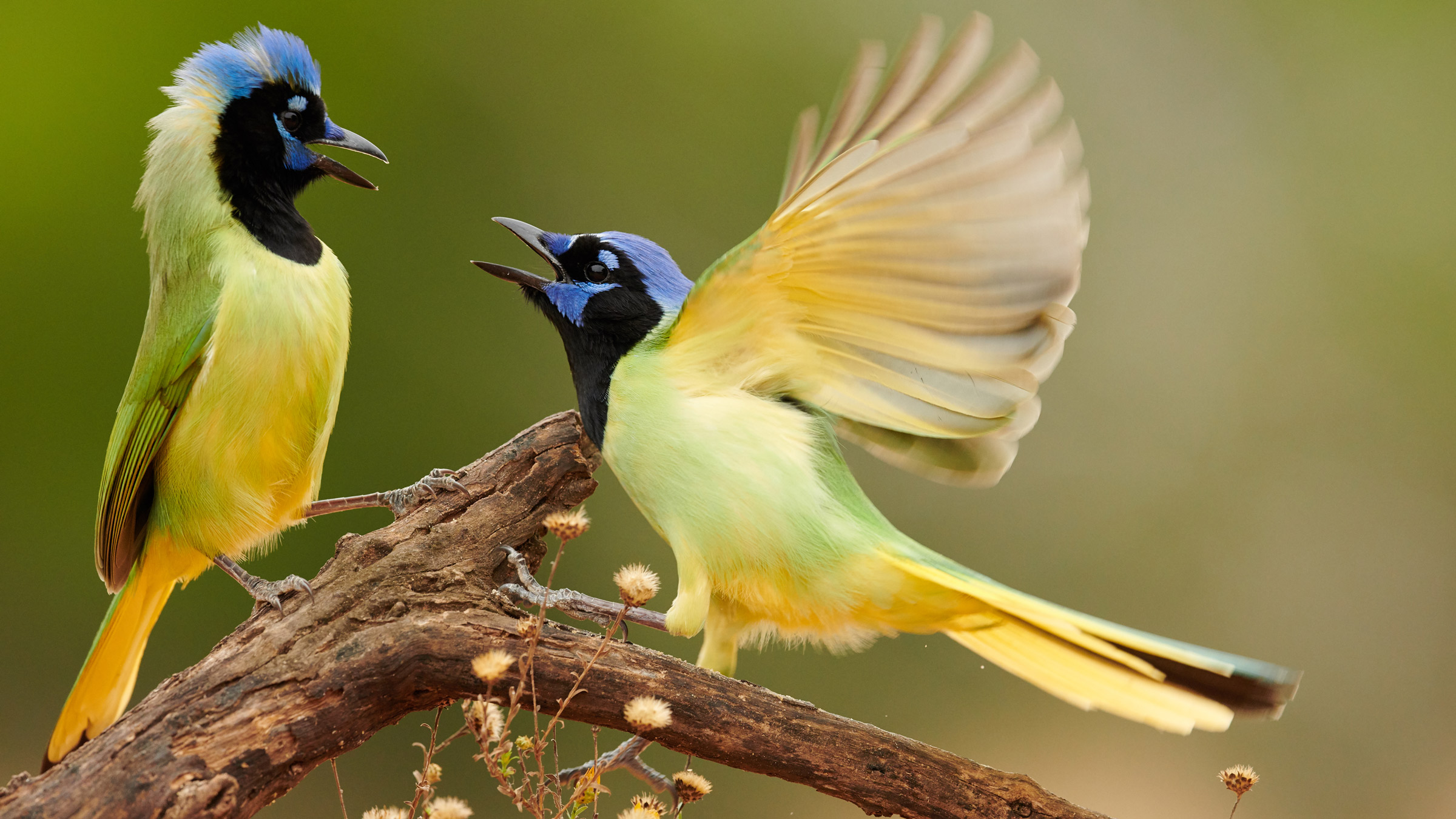
The 18 most-wanted birds in North America
Green Jay
1. Green Jay is one of many bird species that use tools. In 1981, University of Missouri biologist Douglas Gayou watched an adult jay insert a twig beneath a piece of bark to extract and eat insects. (A juvenile tried to get a meal in the same way but was unsuccessful.) 2. Gayou was the first to report tool use by wild jays. 3. Green Jay also has an unusual family system, Gayou found. After fledging, young birds remain with their parents for a year. While the parents raise a new set of offspring, the year-old birds defend the territory but don’t feed the young chicks. 4. Several weeks after the new young fledge, the adult male drives away the year-old jays, and the process starts again. 5. Gayou suggests Green Jay is on an evolutionary path toward cooperative breeding, a family system in which yearling birds help raise and feed their parent’s next offspring. Species that have developed cooperative breeding include Florida Scrub-Jay, Brown Jay, Mexican Jay, and so-called Inca Jay, the South American subspecies of Green Jay. 6. It is distinct from the northern bird not just in breeding strategies and range but also in plumage, habitat, and vocalizations. 7. The authors of a 2010 paper on the genetics of birds in the genus Cyanocorax say Green and Inca Jays probably are distinct species but that more research is needed before the matter can be resolved. 8. Green Jay’s range expansion in Texas during the last 40 years is, in a word, stunning. 9. A century ago, the species was restricted to the Rio Grande Valley. In the 1970s and ’80s, the northern edge of the range was near Kingsville, southwest of Corpus Christi. Since then, it has spread north and east, and today, it occurs near San Antonio — 225 miles north of the Rio Grande. 10. Green Jay isn’t alone. About 70 bird species are expanding their ranges north and east in Texas, according to a recent study by ornithologists John Rappole, Gene Blacklock, and Jim Norwine. They point to the warming climate as the likely cause and say the long-term consequences could be profound.
1. Green Jay is one of many bird species that use tools. In 1981, University of Missouri biologist Douglas Gayou watched an adult jay insert a twig beneath a piece of bark to extract and eat insects. (A juvenile tried to get a meal in the same way but was unsuccessful.) 2. Gayou was the first to report tool use by wild jays. 3. Green Jay also has an unusual family system, Gayou found. After fledging, young birds remain with their parents for a year. While the parents raise a new set of offspring, the year-old birds defend the territory but don’t feed the young chicks. 4. Several weeks after the new young fledge, the adult male drives away the year-old jays, and the process starts again. 5. Gayou suggests Green Jay is on an evolutionary path toward cooperative breeding, a family system in which yearling birds help raise and feed their parent’s next offspring. Species that have developed cooperative breeding include Florida Scrub-Jay, Brown Jay, Mexican Jay, and so-called Inca Jay, the South American subspecies of Green Jay. 6. It is distinct from the northern bird not just in breeding strategies and range but also in plumage, habitat, and vocalizations. 7. The authors of a 2010 paper on the genetics of birds in the genus Cyanocorax say Green and Inca Jays probably are distinct species but that more research is needed before the matter can be resolved. 8. Green Jay’s range expansion in Texas during the last 40 years is, in a word, stunning. 9. A century ago, the species was restricted to the Rio Grande Valley. In the 1970s and ’80s, the northern edge of the range was near Kingsville, southwest of Corpus Christi. Since then, it has spread north and east, and today, it occurs near San Antonio — 225 miles north of the Rio Grande. 10. Green Jay isn’t alone. About 70 bird species are expanding their ranges north and east in Texas, according to a recent study by ornithologists John Rappole, Gene Blacklock, and Jim Norwine. They point to the warming climate as the likely cause and say the long-term consequences could be profound.
Advertisements
11 June 2022
Advertisements



